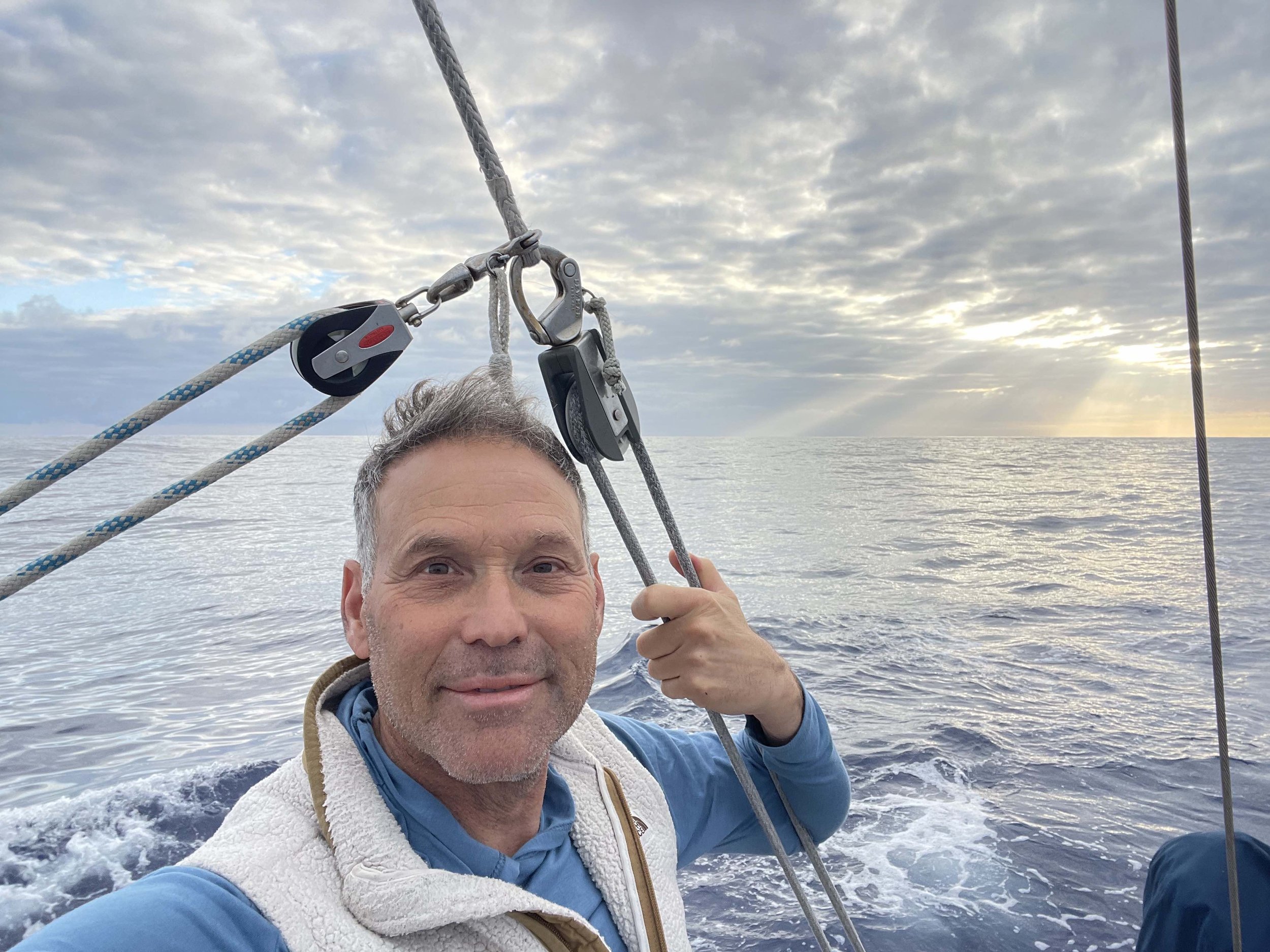Father Wind Takes a Break
Saturday, September 2
As we make our way west towards Hawaii to catch the trade winds to Alaska we sail into beautiful azure water with depths of up to 17,000 feet. Randall points out the beautiful ivory streaks of light that permeate deep into the clear water, characteristic of this part of the Pacific.
We begin to see the occasional sea bird including the North Pacific Albatross https://media.fisheries.noaa.gov/dam-migration/albatross-id-guide0317.pdf (not quite as big or majestic as its Southern Ocean counterpart) the Wandering Albatross https://oceanwide-expeditions.com/to-do/wildlife/wandering-albatross. We see several Storm-Petrels (hello Farallon Islands) https://oceanwide-expeditions.com/to-do/wildlife/storm-petrel and a Booby or two https://medium.com/usfws/all-about-the-seabirds-known-as-boobies-2f9c93ab0e6f. Not to be left out is the tropicbird. Easily spotted due to their long tail https://en.wikipedia.org/wiki/Tropicbird . Standby for updates!
Not a whole lot of sea life to report. Randall spotted some porpoises or dolphins, likely Dall’s Porpoises https://www.fisheries.noaa.gov/species/dalls-porpoise. We continue to see plenty of Portuguese Man-O-War https://oceanservice.noaa.gov/facts/portuguese-man-o-war.html. Interestingly the only whale we spotted was in the bay as we left Richmond, likely a Gray.
We have made excellent progress now that we are more than 400 miles offshore. The wind has been variable (10 to 15 knots) and I have been struggling to learn the operation of the Monitor Wind Vane https://www.yachtingmonthly.com/sailing-skills/windvane-steering-makes-sense-coastal-cruising-66710. It is an age old sailing tool that I am embarrassed to say I have never used as the majority of my ocean sailing experience is racing. While racing, a team member is always at the helm so no autopilots or wind vanes. The Monitor Wind Vane is so beautifully simple and primitive, but stubbornly counterintuitive. Successfully operating it is more art than science. I watch Randall constantly adjust it, especially as the wind changes velocity.
By lunchtime, it is clear that the wind has moved faster than us as we find ourselves in a first class wind hole. We try sailing in light conditions, but at 37,000 lbs., MŌLI needs a good eight knots to keep her moving. We stall out. We look at the forecast and see that we got ourselves into the wrong place at the wrong time and it could be days until the high pressure system around us subsides. We watch helplessly as the barometer rises, the clouds clear and the wind dies. Acknowledging that this leg of the trip is as much a delivery to Homer as it is a sailing experience, we make the inevitable decision to turn on the engine and attempt to motor ourselves into the wind area - a good 100 miles or more from where we are bobbing. I go into the V-berth and cry. Darn, that was a short sailing trip! But readers have no fear. We do not have nearly enough fuel to motor to Homer, so we can only do this for a limited number of days.



